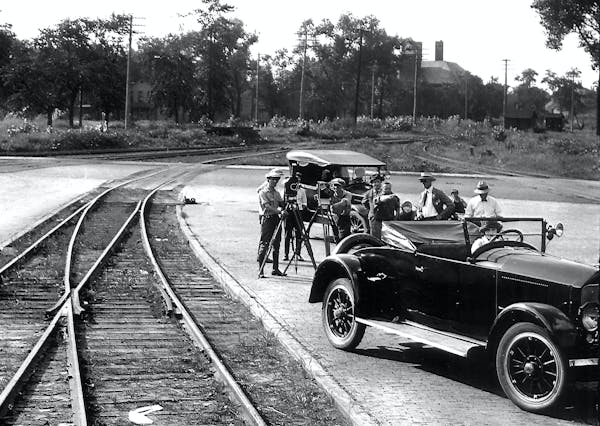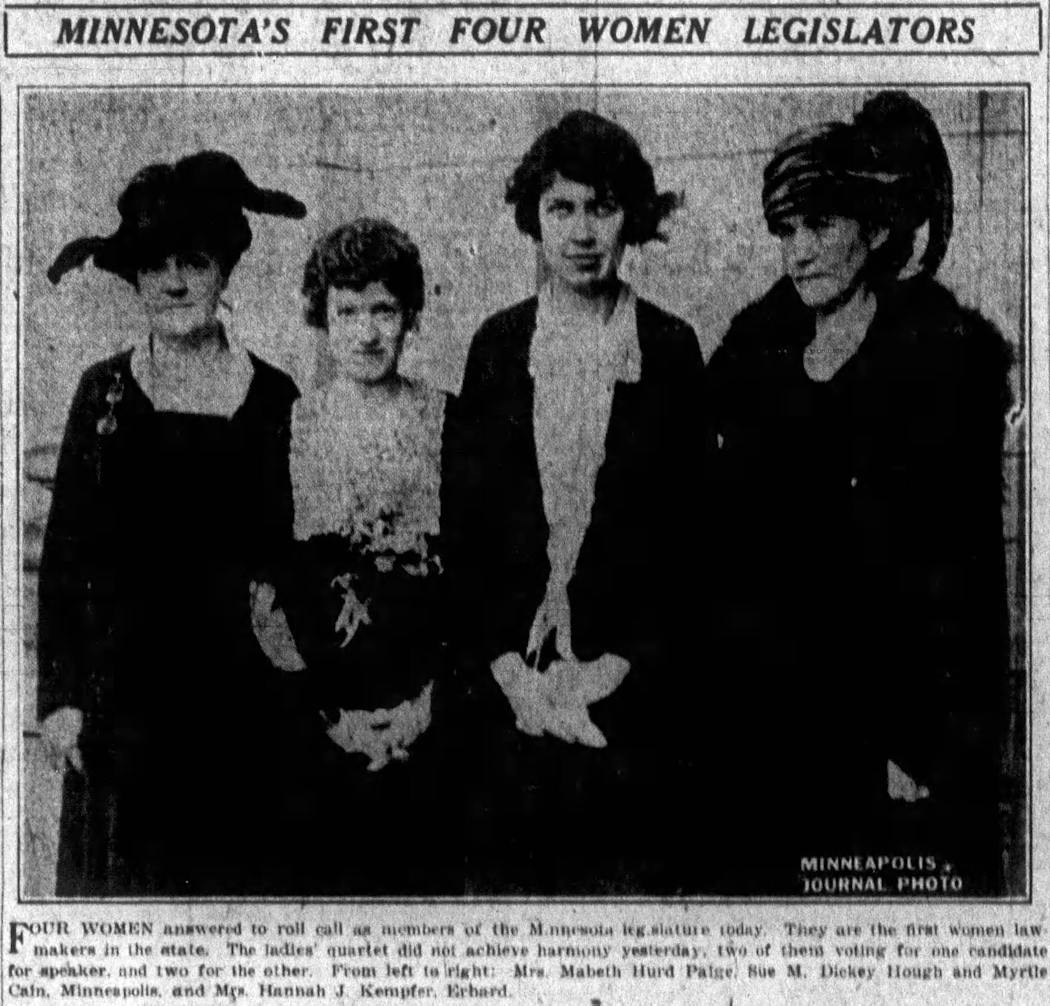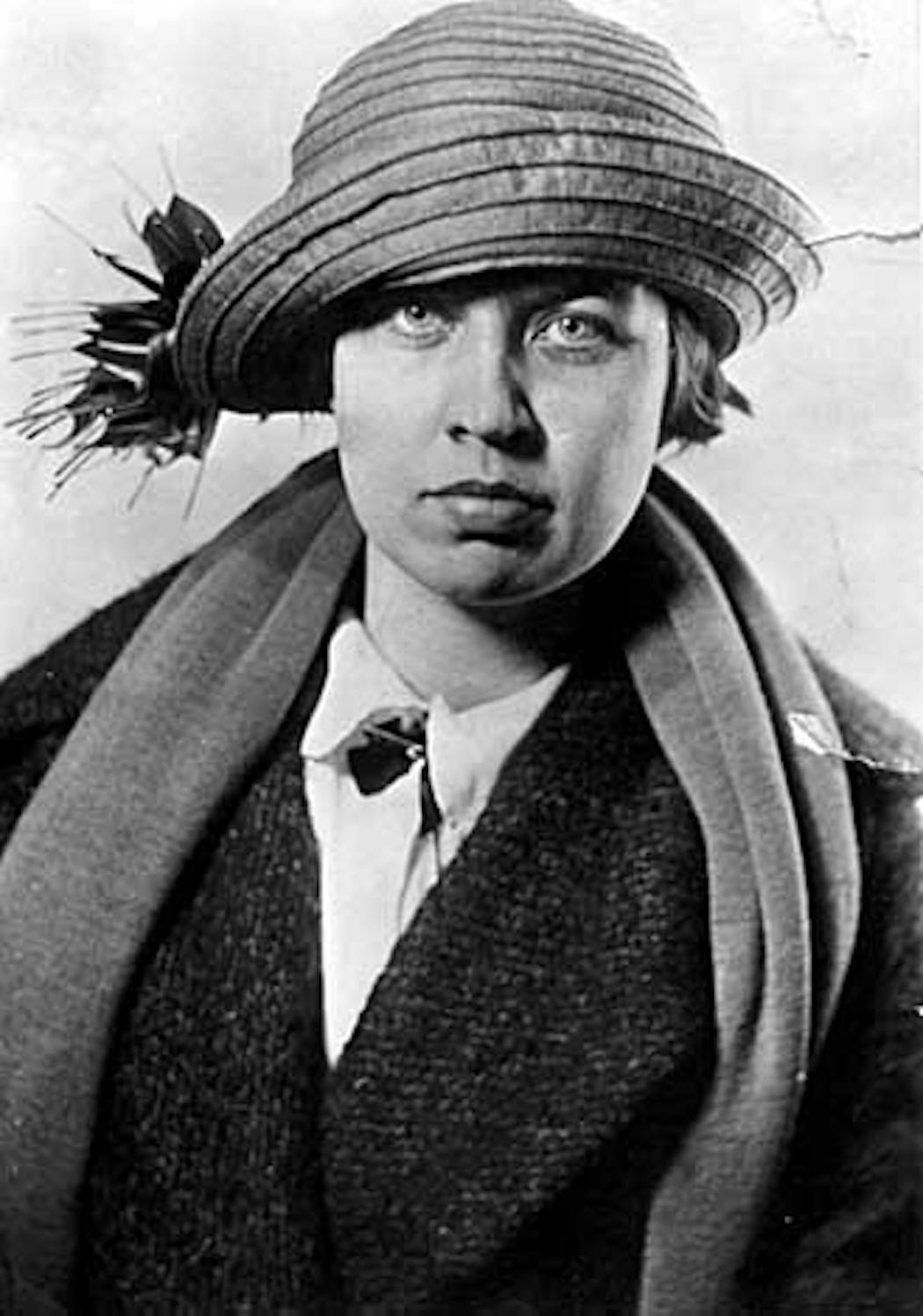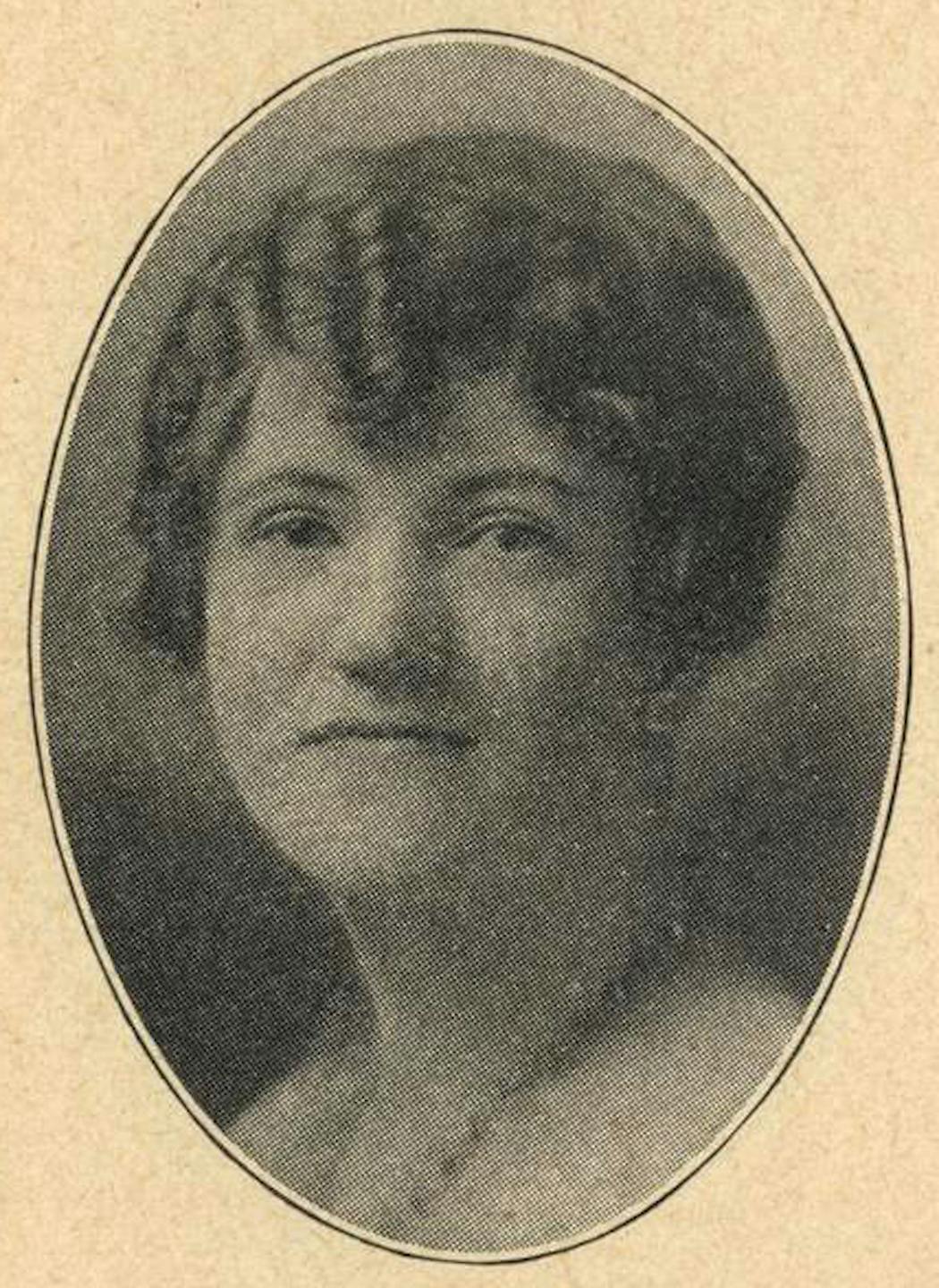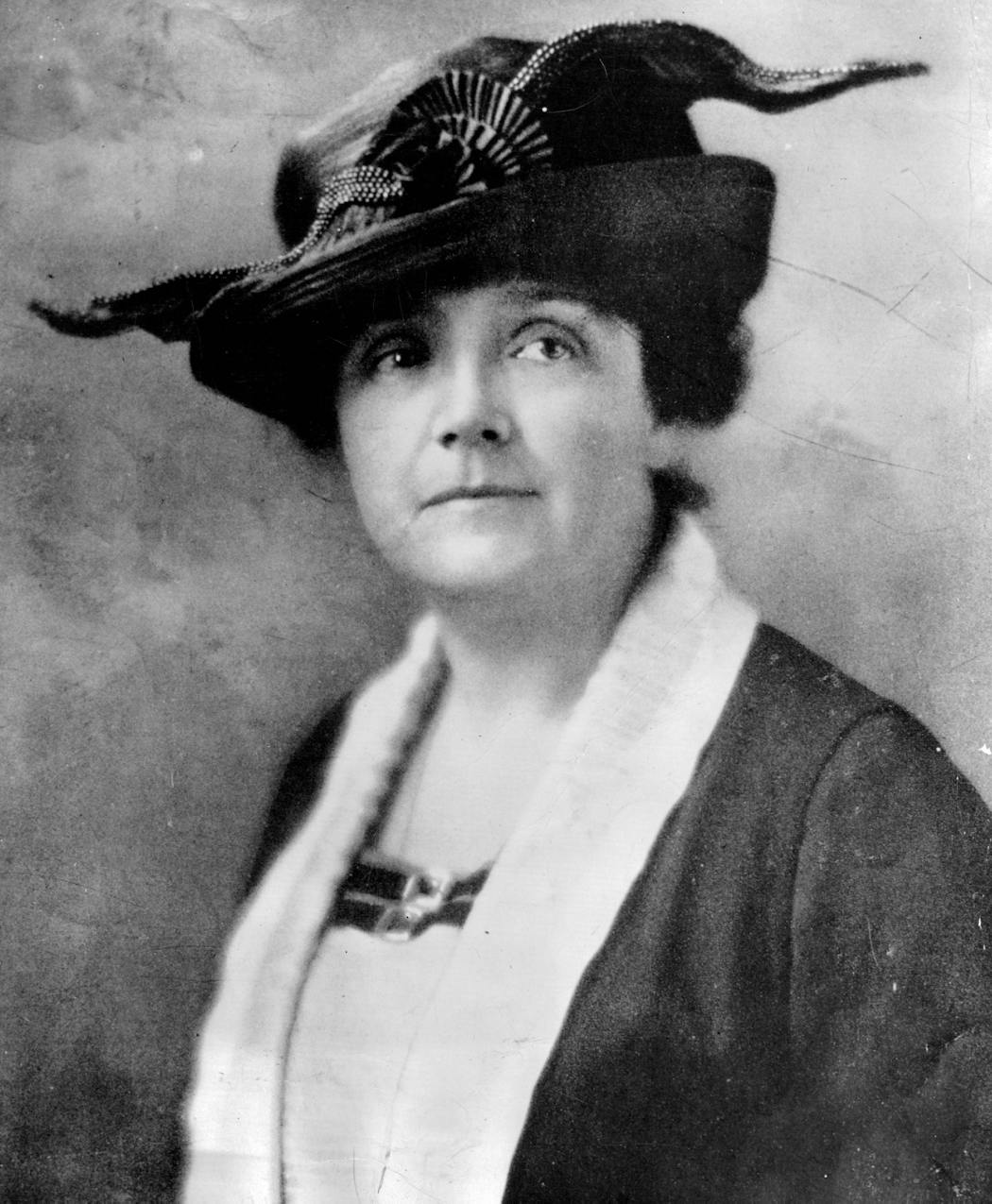Who was the first woman to serve in the Minnesota Legislature?
Listen and subscribe to our podcast: Via Apple Podcasts | Spotify | Stitcher
Former Second Lady Muriel Humphrey made national news in 1978 when she was appointed to fill her late husband Hubert Humphrey's seat in the U.S. Senate, becoming the first woman to serve as a senator from Minnesota.
Similarly, much has been written about Coya Knutson's historic 1954 election as the first Minnesota woman to serve in Congress, blazing the path for the state's current four women representatives in the U.S. House.
But Michael Blissenbach, who lives in Apple Valley, wondered why he'd never learned in school about the first woman elected to the Minnesota Legislature.
"I have three goddaughters, so having strong female figures that they can look up to is important to me," said Blissenbach, who sought answers from Curious Minnesota, the Star Tribune's reader-powered reporting project.
The answer to his question might lie in the fact that Minnesota didn't have just one trailblazing woman in the Minnesota Legislature — it had four. And they got involved in politics long before Knutson and Humphrey.
Political upheaval in the '20s
They were part of what legislative chronicler Carl Buell described at the time as a "political revolution" in 1922 that saw massive turnover in the state House and Senate. Voters liberally ousted members of the previous legislative class for unpopular votes on iron ore mining, political conventions and street railways.
Instead, they picked a diverse freshman class of legislators that included the first four women ever elected to the Minnesota House. They had earned the right to vote just a few years earlier and were motivated by women's rights, but the first female legislators were not monolithic. The group included two Republicans, a Farmer-Labor Party member and an Independent.
Despite their history-making status, newspaper clippings from 1922 and 1923 made only passing reference to their entrance into politics. A photo of them standing together clipped from the evening edition of the Minneapolis Journal on Jan. 3 called them the "ladies quartet" and noted they split their vote on who should be the next speaker of the Minnesota House.
Most newspaper articles from the time noted their appearances together speaking to women constituencies on the radio, or addressing luncheons organized by male legislators' wives. They'd won the right to vote, but views were slow to change around whether women were welcome in politics. It took another five years before there would be a woman in the state Senate.
A farmer, real estate agent, suffragette and a labor leader — the first four women brought a wide range of experiences to the Capitol building and didn't waste any time getting to work.
Hannah Jensen Kempfer, a wiry 42-year-old farmer from Otter Tail County, was the only woman from the group who lived outside of Minneapolis. Her early life read like an adventure novel, wrote Billie Young and Nancy Ankeny in their book "Minnesota Women in Politics."
"She had been born out of wedlock to a stewardess sailing on a ship in the North Sea. Placed in an orphanage in Norway, she was adopted by a Norwegian couple who brought her at the age of six to the United States," they wrote.
She'd go on to serve 18 years in the Legislature as an Independent, sitting on almost every major committee all while raising animals, selling homegrown food and trapping animals for hides.
Her love for animals led to legislation to limit hunting seasons in Minnesota, and her own unorthodox upbringing prompted her and the other first women legislators to pass a law giving children of unwed mothers the same rights as children deemed "legitimate" at the time.
One of those colleagues, Myrtle Cain, had a much shorter tenure in St. Paul, losing her election two years later by just 39 votes. But the 26-year-old labor organizer from Minneapolis — known as the "flapper legislator" — still led the charge on several major issues in her time at the Capitol.
The Farmer-Labor Party legislator introduced a bill making it a misdemeanor for members of organizations such as the Ku Klux Klan to conceal their identity or appear in public wearing masks.
She believed in "equal rights and no favors," introducing the first bill in Minnesota demanding equal rights for women in 1923.
Sue Metzger Hough, a real estate developer, came from a prominent political family in Pennsylvania (her great-grandfather was President John Quincy Adams) before moving to Minneapolis and running for the Legislature. A Republican, she wanted to address a recent crime wave in the city and reduce taxes.
Hough's pet project, however, was a so-called "revolver bill," which proposed creating a permit requirement for carrying a weapon and penalties for non-compliance.
"I felt if our boys could not so readily secure firearms, they would not commit these crimes," she said in a 1923 legislative interview about her work. It's unclear if her proposal passed that year, and Hough didn't return to the Legislature after her first term. She lost her bid for re-election in 1924 and in four subsequent campaigns.
Like Hough, Mabeth Hurd Paige was a fellow Minneapolis resident and Republican but she was "rebuffed" by the state's GOP party organization, according to "Women of Minnesota: Selected Biographical Essays." She ran independently and served as a self-professed "freelance liberal conservative."
"She would not have the dictators of any party making her decisions for her," according to "Lady in Law: A Biography of Mabeth Hurd Paige."
She came to the Legislature with a long history in the suffrage movement, including as a charter member of the League of Women Voters. Originally planning to serve only one or two sessions, Paige would stay in St. Paul for 22 years, introducing bills that outlawed "loan sharks" and passing laws to shorten the workweek for girls and women.
Amy Koch, a former Republican legislator, said while women have been serving in St. Paul for 100 years, progress has been slow. She was the first and only woman elected to serve as majority leader in the Senate, and the state House has had only three women serve as speaker in state history.
"I'm always surprised at how slowly it moves for women," Koch said. "It's been 100 years and we're still fighting to get above 30% of the members of the Legislature when we're more than 50% of the population."
If you'd like to submit a Curious Minnesota question, fill out the form below:
Read more Curious Minnesota stories:
Why hasn't Minnesota passed the Equal Rights Amendment?
Why was the career of Minnesota's first congresswoman cut short?
Why is the Minnesota Legislature's session so short?
Why doesn't Minnesota's governor pardon the ceremonial turkey?
Why can't Minnesotans bypass the Legislature to change state laws?
Why hasn't Minnesota ever produced a U.S. president?

